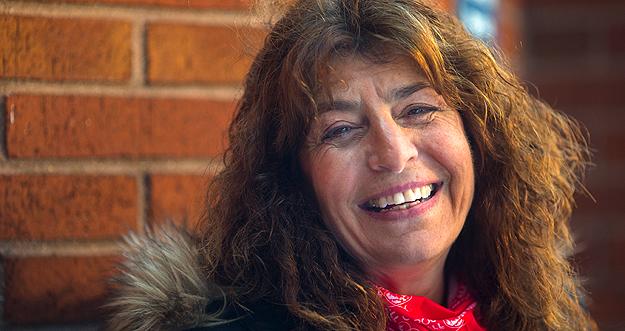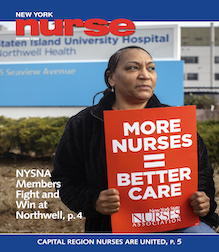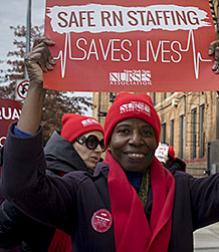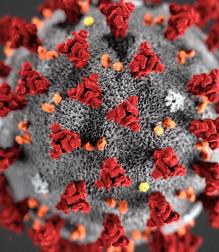
In Las Vegas in October 2017, Stephen Paddock killed 58 concertgoers — the worst mass shooting in modern American history. On February 14, 2018, staccato fire echoed through the halls of a Florida school, as ex-student Nikolas Cruz opened fire, leaving 17 dead. Government-sanctioned availability of personal “weapons of mass destruction” is the critical factor in mass killings, but the mental stability of perpetrators and environmental factors that intensify imbalances, cannot be ignored.
Nurses, health workers, patients, and visitors have been besieged in recent times by extreme acts of violence in our facilities. What’s more ironic than the commission of such acts in a place where people come to be protected and cared for? How do we, as a society, process the outrageous phenomenon of patients assaulting caregivers?
The roots of violence in our society are deep. Sociologists suggest many reasonable theories about why we see its proliferation in such unlikely settings as hospitals, concerts, schools, and houses of worship. Political and religious extremist ideology and the scapegoating of marginalized communities dangerously justify hate crimes. The gun lobby — citing the Second Amendment, when the real issue is to create huge profits for the weapons industry — promotes widespread access to military assault weapons, allowing for horrifically high death tolls.
Social alienation and mental/behavioral health are important considerations as well. What snapped in the mind of Major Hasan, a US Army psychiatrist who killed 13 people at a military base in Texas? What was Paddock thinking when he methodically murdered 58 people who never dreamed that this concert would be their last? Nineteen-year-old Nikolas easily obtained an AR-15 rifle in spite of a history of mental illness and alarming social media posts.
There’s an epidemic in our society that implicitly and explicitly condones violence. Violence is an insidious intoxicant, permeating all of our social, cultural, and political structures. It’s ubiquitous in movies, tabloids, and social media. It’s implied in the unbridled increase — and profits generated — by international arms sales. It’s uncensored in children’s video games. It’s evident in the vitriolic language of certain elected leaders and in the actions of some of their supporters.
There’s a cloud hanging over us — particularly among those hardest hit by budget cuts — whose toxic vapors seep into our collective consciousness, foretelling a dim future and promoting fatalism and cynicism. As dreams shatter, savings dwindle, and housing and job situations become precarious, folks get depressed…and angry. With frustration levels escalating, it doesn’t take much to have a nervous breakdown — or to turn that anger inward, or outward.
There are 295 mental disorders listed in DSM-5 and the increase in childhood mental illness has skyrocketed. Many of these illnesses include behavioral disorders and “dumping ground” diagnoses for unexplained symptoms. A CDC study revealed that more than 8.3 million adult Americans suffer from a serious mental illness — a statistically significant rise. The same study found that access to mental health professionals and treatment has simultaneously declined at alarming rates.
With care unavailable due to lack of coverage, inadequate numbers of mental health professionals and treatment centers, and societal stigmatization, desperately ill people will often resort to self-medicating — thus the “dual diagnosis” of mental illness and substance abuse.
The twin stigmas of these disorders — and the role of denial — exacerbate the already challenging dilemma of procuring effective intervention. Exhausted families and friends are more likely to abandon such patients, leaving them to find their own way in a hostile world. The result?
An Urban Institute report reveals that 55% of male inmates in state prisons are mentally ill, as are a shocking 73% of female inmates! Our prisons are housing a huge percentage of very sick people who belong in treatment facilities. Instead they are perpetrators — but far more often victims — of violence in settings that only serve to worsen their situations.
Those out in the streets find their way to ERs and Acute Psychiatric facilities. The impact on families and communities creates a frightening spiral of dysfunction. Untreated illness, marginalization, reactive depression, and frustration can lead to violent acts committed against whomever is encountered. Health care workers are thus frequent victims of such violence and abuse. We’re on the front lines: accessible, available, and unprotected by our own institutions.
This is why our demands for safety on the job are so linked to the crying need for a rational universal health system that treats mental illness (our bill: NY Health, would provide such care). Employers, who’ve generally shrugged off their responsibilities to protect us, must take immediate and long-term measures to prevent assaults and increase, not decrease, access to quality mental healthcare for our communities.
Join NYSNA’s struggle as we demand protection on the job and expansion of mental health services. Join our fight for improved, expanded “Medicare for all,” the ultimate solution for mental health parity. Join us as we stand with our “youth of conscience” as they demand an end to assault weapon availability.
An injury to one is indeed an injury to us all.




